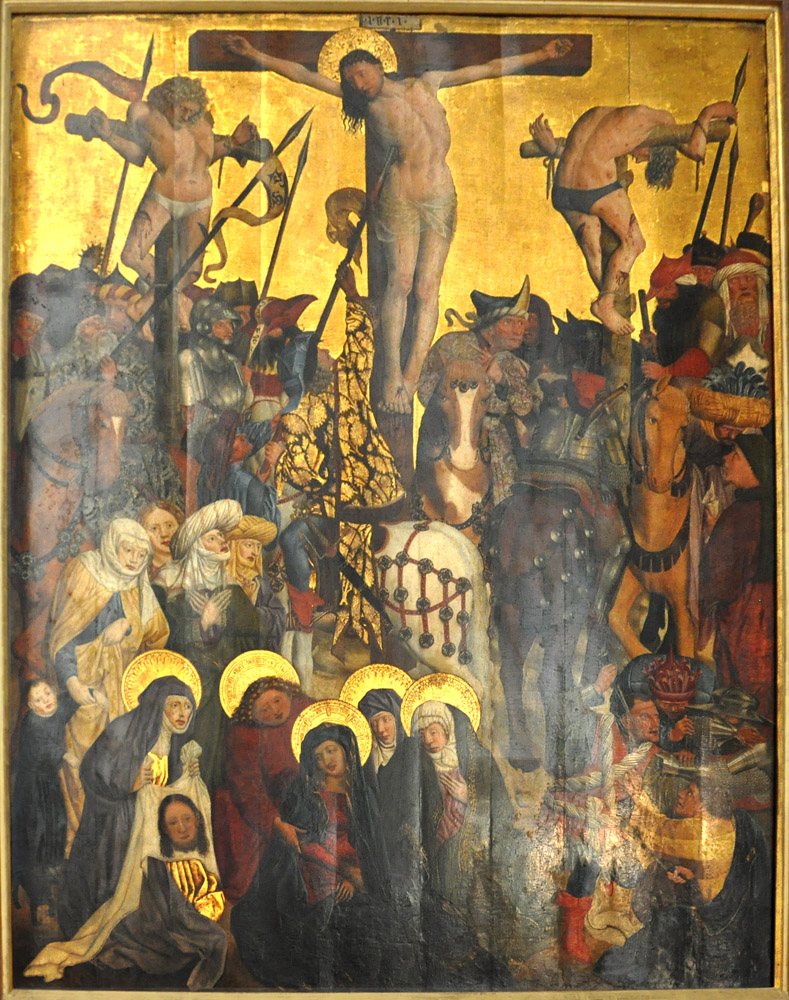
The Crucifixion
Probably 15th century
Frauenkirche, Munich, Germany
This work has all the hallmarks of German and Flemish Crucifixion paintings of the 15th-century, which seek to inspire pathos above all. The thieves' bodies are grossly contorted, that of Jesus only slightly less so. Whereas earlier Crucifixions showed the blood flowing sacramentally from Jesus' side into chalices, this type pictures the lance actually piercing his body. Like many works of this type, this one omits the centurion who points to Jesus and says "surely this was the son of God." The crowding of the scene is also common, intensified in this case as inimical multitudes push in from both sides of the canvas.
In many ways the painting even outdoes the pathos of similar works. It multiplies the one lance mentioned in the Gospel into a multitude of spears striking into the sky. Like other paintings it pictures Mary fainting and turned away from the cross as the women try to console her. But it also blocks the space between them and Jesus with Longinus and his horse, and it contrasts the women's dull garments with the soldier's golden mantle and the ornaments on his grand white steed. And most viewers will wonder what kind of consolation Mary will receive from the veil that Veronica presents to her!
The work is the center of the open state of an altarpiece with two wings. The original paintings on the wings were replaced in modern times by abstract art.
View this image in full resolution.
Read more about the Crucifixion.
Photographed at the Frauenkirche by Richard Stracke, shared under Attribution-NonCommercial-ShareAlike license.